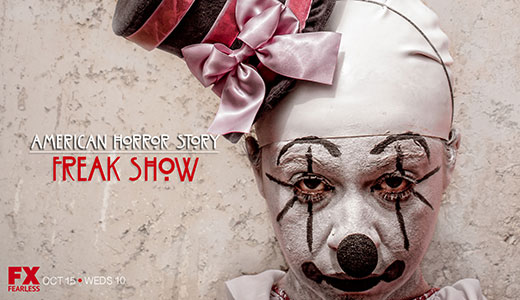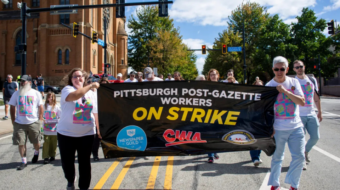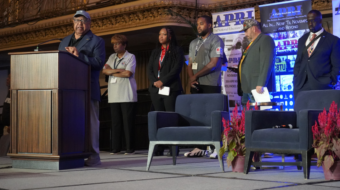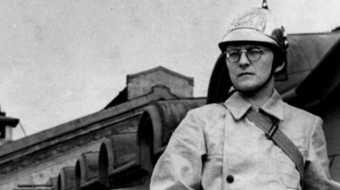
One of the most popular TV shows four years in a row has been “American Horror Story,” which has taken the viewing public into a haunted house, a horrific mental health institution, a witches’ coven in New Orleans, and now a traveling carnival freak show.
The shows, depending upon how you view them, can scare the hell out of you or get you thinking and laughing about anything from everyday life to morals and politics.
The American Federation of State, County and Municipal Employees (AFSCME) has taken off on the popular show to demonstrate the real horror story that is happening for workers in key states around the country. The idea is to defeat some of the worst right-wing GOP governors up for reelection this Nov. 4.
There are several “episodes” in this special “season” of the AFSCME-produced “American Horror Show.” All of the “episodes” are designed to warn working people about the real American horrors that have taken the form not of ghosts or demons, but of GOP governors in important states. All are designed to turn out a large working-class vote against the “demons” in November.
The special “season” has four episodes, one each for four GOP governors: Rick Snyder of Michigan, John Kasich of Ohio, Scott Walker of Wisconsin, and Rick Scott of Florida.
Against the backdrop of the theme music from the actual show you hear each of the governors referred to as a job-killer, an anti-worker bogeyman and a Wall Street ringleader. (story continues after video)
The ads are the latest indication that unions intend to fight hard during the mid-term elections right up to the end, despite polls that show some Republicans in a strong position since, traditionally, conservative voters are the more likely to turnout in the mid-terms. The American Horror Story ad is part of an effort labor is making to reverse those trends.
“You know what our problem is,” said Lee Saunders, the president of AFSCME in a recent interview. “It’s turnout . We have prioritized the election races and we have to get our people out. The local unions are being mobilized. If we get our people out, we win and if we don’t – well then we have problems. We cannot have a repeat of 2010,” he warned. “That would be a disaster.”
In that year the Republican base turned out while much of the coalition that had elected President Obama two years earlier stayed home, resulting in the election of scores of tea party Republicans.
The American Horror Story ad reflects what Saunders, at a July meeting of the AFL-CIO executive council , said was labor’s “first priority” – to defeat sitting right-wing governors in the four states of Ohio, Pennsylvania, Wisconsin, and Florida.
That top priority goal has been tweaked a bit with the addition of concentrations on Illinois and Connecticut, where unions want to protect incumbent Democratic governors being threatened by right-wing challengers.
In Illinois unions face a difficult situation. Saunders, who is also chair of the AFL-CIO’s Political Committee, and other labor leaders have warned that Democratic Gov. Pat Quinn is in trouble after alienating unionists over pensions. AFSCME has actually filed suit against him to overturn pension cuts. “Nevertheless, if Quinn doesn’t win, we’re in trouble,” said Saunders. Unions are running telephone banks and get-out-the-vote efforts in Illinois.
Quinn is being opposed by Republican Bruce Rauner, an extreme right-wing anti union businessman.
For labor, less than perfect Democratic candidates is a problem in other places too. Connecticut Democratic Gov. Daniel Malloy came into office with strong union support four years ago. He had walked a picket line with striking nurses. “But now even he has to rebuild alliances,” Saunders said, “particularly with teachers. He won only narrowly last time with 50 percent of the vote and his GOP opponent talked about having a ‘Wisconsin moment.'”
Photo: FX Networks official site










